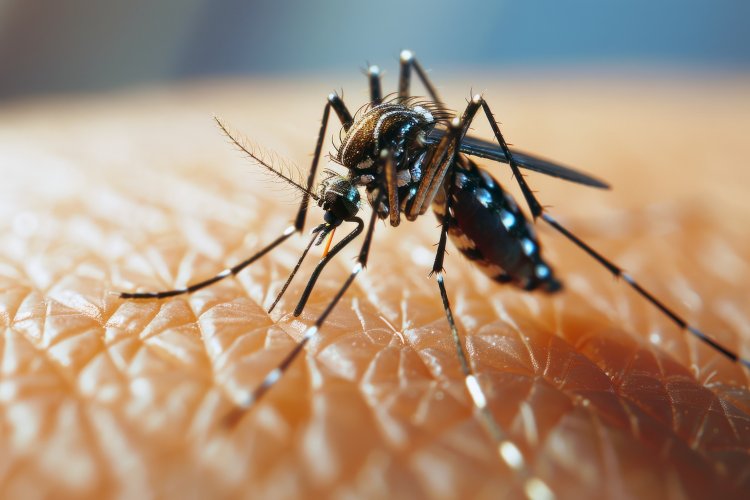Zika Virus: A Global Health Crisis Explained
The Zika virus, a mosquito-borne flavivirus, has become a global health concern due to its rapid spread and the severe health issues it can cause. First identified in monkeys in Uganda's Zika Forest in 1947 and later in humans in 1952, the virus has since caused significant outbreaks, particularly in the Americas, Southeast Asia, and the Pacific Islands. The 2015-2016 outbreak in Brazil marked a turning point, revealing the virus's potential to cause serious birth defects and neurological disorders.

Transmission
The Zika virus is primarily transmitted through the bite of infected Aedes mosquitoes, mainly Aedes aegypti and Aedes albopictus. These mosquitoes are also vectors for other diseases such as dengue, chikungunya, and yellow fever. Zika can also spread through:
Sexual Transmission
The virus can be transmitted from an infected person to their sexual partners.
Maternal-Fetal Transmission
An infected pregnant woman can pass the virus to her fetus, potentially causing severe congenital conditions.
Blood Transfusion
Although less common, there have been instances of Zika virus transmission through blood transfusions.
Laboratory Exposure
Healthcare workers handling the virus in laboratory settings can be at risk if proper precautions are not taken.
Symptoms and Diagnosis
Many people infected with the Zika virus remain asymptomatic. When symptoms do occur, they are generally mild and include:
Fever
Low-grade fever lasting for several days.
Rash
A maculopapular rash that often starts on the face and spreads to other parts of the body.
Conjunctivitis
Red eyes without discharge.
Muscle and Joint Pain
Particularly in the hands and feet.
Headache and Malaise
General discomfort and fatigue.
These symptoms typically appear 2 to 7 days after being bitten by an infected mosquito and last for about a week. Due to the overlap of symptoms with other mosquito-borne diseases, laboratory tests are essential for a definitive diagnosis. These include:
Reverse Transcription-Polymerase Chain Reaction (RT-PCR)
Detects viral RNA in blood or other body fluids during the acute phase of infection.
Serological Tests
Detect antibodies against the virus, although cross-reactivity with other flaviviruses can complicate results.
Health Implications
While most Zika virus infections are mild, the virus can cause severe complications:
Congenital Zika Syndrome
When a pregnant woman is infected, the virus can cross the placenta and infect the fetus. This can result in microcephaly (abnormally small head and brain), brain calcifications, eye abnormalities, and other severe neurological and developmental issues.
Neurological Complications
Zika virus has been associated with Guillain-Barré syndrome, a rare condition where the immune system attacks the nerves, leading to muscle weakness and sometimes paralysis.
Prevention and Control
Effective prevention and control of Zika virus involve reducing mosquito exposure and implementing mosquito control measures:
Personal Protection
Use of insect repellents, wearing long-sleeved clothing, and using mosquito nets can reduce the risk of bites.
Environmental Management
Eliminating standing water where mosquitoes breed, using larvicides, and deploying mosquito traps.
Community Efforts
Public health campaigns to educate communities about the risks and prevention methods.
Travel Advisories
Pregnant women and others at high risk are advised to avoid travel to areas with active Zika transmission.
Research and Future Directions
Research is ongoing to develop vaccines and treatments for the Zika virus. Several vaccine candidates are in various stages of clinical trials, including DNA vaccines, inactivated virus vaccines, and live-attenuated vaccines. Additionally, antiviral drugs are being explored to treat Zika infection.
Innovative approaches to mosquito control are also being investigated, such as:
Genetically Modified Mosquitoes
Releasing mosquitoes that are genetically modified to reduce mosquito populations or to be resistant to carrying the virus.
Wolbachia Bacteria
Introducing Wolbachia bacteria into mosquito populations to reduce their ability to transmit the virus.
In conclusion, The Zika virus continues to pose a significant threat to global health, particularly due to its severe effects on pregnant women and their infants. Comprehensive mosquito control, public education, and ongoing research are crucial to managing and reducing the impact of Zika virus outbreaks. As scientific understanding advances, the development of effective vaccines and antiviral treatments holds promise for the future, offering hope for better protection against this virus.
Disclaimer: The information provided in this article is for educational purposes only and should not be considered medical advice. If you have any health concerns or are experiencing symptoms, it is important to consult with a healthcare professional, such as a doctor or clinic, for proper diagnosis and treatment. Always seek the advice of your doctor or other qualified health provider with any questions you may have regarding a medical condition. Do not disregard professional medical advice or delay in seeking it because of something you have read in this article.
#ZikaVirus #Health #Prevention #MosquitoControl #PublicHealth #Research #Vaccines #Antiviral #Pregnancy #GlobalHealth
What's Your Reaction?





















